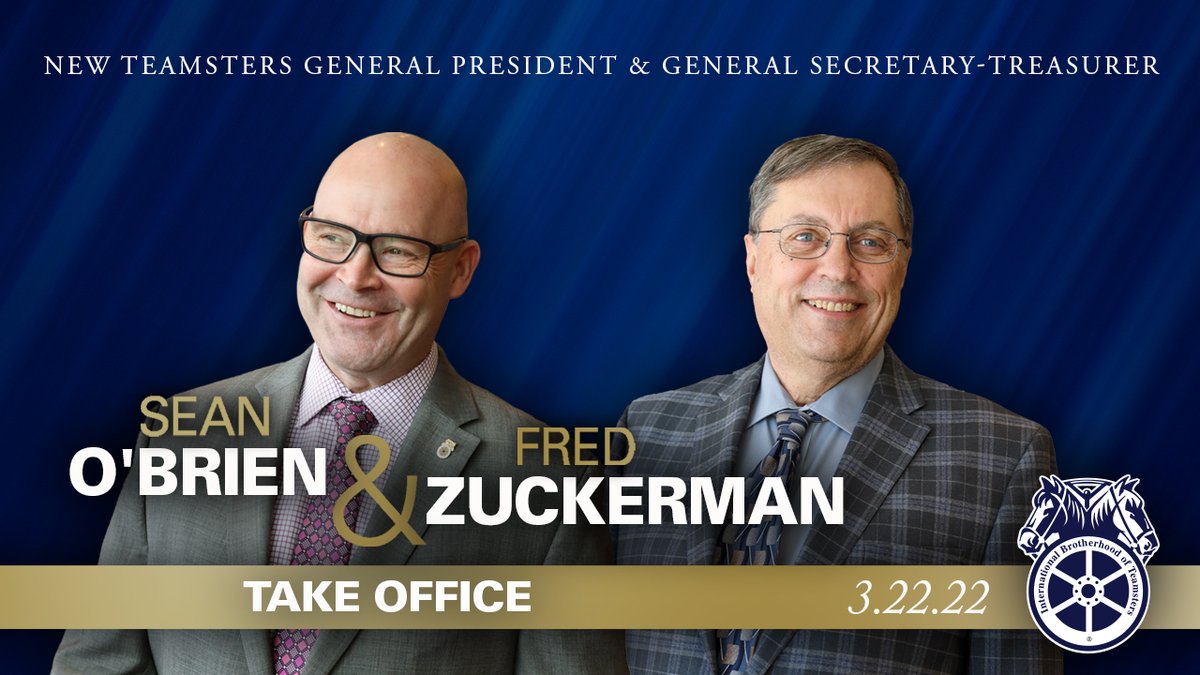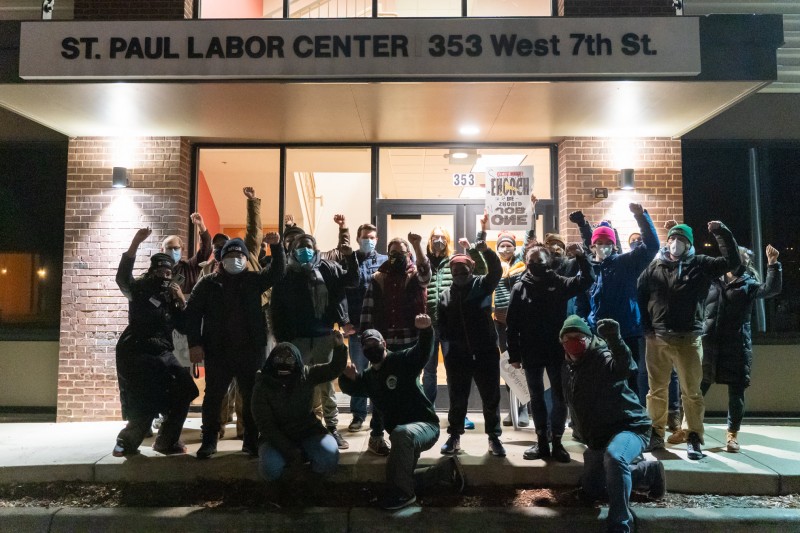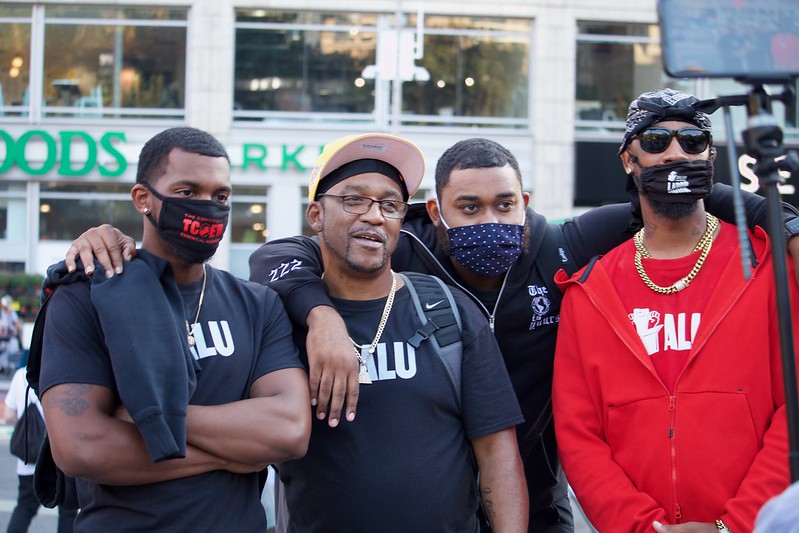Sean O’Brien and Fred Zuckerman—respectively the newly-elected General President and General Secretary-Treasurer of the Teamsters — have raised expectations across the political spectrum. Throughout their campaign, and at the recent swearing-in-ceremony on March 22, coverage has focused on the possibility of greater labor militancy. Typical was CNN Business with their headline story, “This new union boss could start the biggest strike in decades.”

The primary target of this potential militancy is United Parcel Service (UPS), the largest Teamster employer in the United States. The O’Brien-Zuckerman Teamsters United slate won a landslide victory over the Steve Vairma’s Teamster Power slate last year largely because of their opposition to the hated 2018 national UPS contract. Vairma was the anointed successor to long time Teamster leader Jim Hoffa, whose two decades in office witnessed stagnation and across the board concessions in booming industries, especially logistics, and most notably at UPS. The O’Brien-Zuckerman leadership are expected to produce a different outcome in the upcoming 2023 contract negotiations with UPS.
O’Brien and Zuckerman’s victory, however, was tempered by the lowest turnout in rank-and-file voters since 1991, an example of how two decades of stagnation under Hoffa has impacted the membership. Cynicism is widespread in the union but there is also an eagerness for vitality to return to the union, some of which is born out of desperation. There is a widespread feeling that the Teamsters have to change or face increasing marginalization as a national union in the logistics and transportation industries.
Yet, how much change can be expected from a new leadership team that only a few years ago were some of Hoffa’s most vigorous supporters, and largely jumped ship to the opposition to preserve their leadership positions in the union?
Transition
The long four month transition period—from O’Brien and Zuckerman’s victory to formally taking office—saw a flurry of activity at the normally staid Teamster headquarters. Sean O’Brien resigned as president of Local 25 in Boston and Teamsters Joint Council 10, covering all Teamsters in New England, to concentrate fulltime on the duties as General President. O’Brien held regular zoom calls to announce his appointments to lead the many craft and industry divisions of the vast Teamster bureaucracy.
Compared to the Hoffa years, when members were kept in the dark about developments in the union and contract negotiations, O’Brien and Zuckerman have struck a pose of openness and transparency. Since being sworn into office, O’Brien has hit the road visiting local unions and meeting with striking workers and shop stewards. O’Brien and Zuckerman also moved quickly to deal with two issues left hanging by Hoffa.
They authorized a one million dollar donation to the Teamsters Local 174 strike fund in Seattle for concrete delivery drivers. Local 174 had been on strike for the past five months halting major construction projects in the booming city. O’Brien also announced that he was moving to withdraw Local 117’s support for the disastrous gig worker bill in the Washington state legislature. The Seattle local is led by Vairma/ Hoffa supporter John Searcy. Hoffa had taken a hands-off approach to both the cement strike and the gig worker bill despite each having national implications for the union.
Despite these interventions by the new O’Brien leadership, both gambits appear to have failed. The surrender of Local 174, despite the infusion of funds from O’Brien, is not the best advertisement for the Teamsters’ Amazon organizing project, by losing an important strike in Amazon’s front yard. O’Brien’s intervention also came too late on the gig worker bill as it was signed into law on April 1.
Continuity or change?
At the same time, O’Brien appointments to lead the union’s many craft and industry divisions reveal that the new leadership is almost entirely drawn, with few exceptions, from current full-time Teamster staffers and officers. All of the picks were predictable. These are safe, in-house choices, not something that will shake up the sclerotic Teamster bureaucracy.
Some are direct holdovers from the Hoffa-era, like John Murphy and Bill Hamilton. Murphy was UPS Freight director under Hoffa. He was appointed by O’Brien to lead the long suffering national freight division, where he largely failed. He was on the negotiating team for the 2018 UPS Freight contract that was rejected on the first round of voting by 62% of the members.
Under Hoffa, Bill Hamilton was director of the Express Division—whose largest component is DHL— and he will keep his job in the new administration. Hamilton campaigned to pass the 2018 UPS contract that was rejected by the members but imposed undemocratically by Hoffa. In many ways, Hamilton personifies a section of conservative Teamster old-guard that defected to O’Brien without changing their spots.
Another similarly suited Hoffa supporter who defected to O’Brien is Tom Erickson, the Blaine, Minnesota-based leader of Teamster Local 120. He was appointed Director of the Warehouse division, the job formerly held by Steve Vairma. The choice is disturbing because of Erickson’s sympathy for the Trumpian right and hostility to Black Lives Matter.
Under Erickson’s leadership, Local 120 endorsed Pete Stauber, a former cop union leader and Trump supporter, for Congress in 2020. Local 120 also offered to host the National Guard in their union hall, who deployed to contain protests following the verdict in Derek Chauvin’s trial. Labor activists expelled the Guard from federation’s property.

O’Brien talked about putting more resources into the pipeline division. Hoffa supported the Keystone XL pipeline that would bring oil from the Canadian Tar Sands to the U.S. The project produced widespread opposition and violent repression from the state governments. Biden canceled the permit for the project. Will O’Brien continue Hoffa’s support for destructive environmental policies? There’s no indication he will break from Hoffa’s policies, right now.
Rocco Calo, president of Local 1150 in Connecticut, was appointed the director of the Teamsters Industrial trades division. Calo was an early pick for O’Brien’s slate. His local union represents workers at the Sikorsky aircraft corporation, the manufacturers of utility and attack helicopters for the U.S. military. Sikorsky has plundered Connecticut for billions over the years in tax breaks and subsidies. Calo’s appointment likely means that the Teamsters will not break from its long record of supporting bloated defense budgets.
Chuck Whobrey, president of Teamsters 215, was appointed Director of the Teamsters Public Services division that includes police, and deputy sheriffs, and prison guards. Greg Floyd, president of Local 237 in New York, was appointed deputy director. Where do they stand on issues of police reform or the defund campaigns? Floyd began his career as a cop and later captain in the New York City Health and Hospitals Corporation police force. He opposed efforts to remove school safety agents, represented by his local union, from supervision by the notoriously racist and violent NYPD.
The murder of Teamster members Philando Castile in 2016 and Frank Ordoñez in 2019 by police officers and a sheriff’s deputy became national news. Despite calls to expels cops, deputies, and prison guards from the major industrial unions and labor federations since the national uprising against racism police George Floyd’s murder in 2020, no major union has done it. We are unlikely to see a change in Teamster policy towards the cops under O’Brien.
O’Brien most disappointing decision has been holding over Randy Korgan, who was appointed the Teamsters National Director for Amazon by outgoing General President Jim Hoffa last year. Korgan is Secretary-Treasurer of Local 1932 in San Bernardino, California. Despite claims of a plan to organize Amazon, ten months following the much-hyped Teamster convention resolutions to organize Amazon, there is little sign of movement.

Meanwhile, the bombshell win in Staten Island by the Amazon Labor Union (ALU) has upended many of the long and largely failed organizing methods of the major industrial unions. While O’Brien extended a friendly hand to ALU’s Interim-President Chris Smalls, the ALU’s victory does not appear to have produced the deep reflection on past organizing practices or personnel needed to take on such a global behemoth as Amazon.
Reformers on the margins
During the election campaign, O’Brien said he would transform the education and organizing departments. John Palmer and Paul Trujillo, two members of the Teamsters for a Democratic Union (TDU), the longstanding reform group in the union with roots in the 1970s rank and file rebellion, have been given prominent positions within this work.
Paul Trujillo (Local 822) was appointed Director of Education. And John Palmer – elected as an International Vice-President in 2016 and 2021— will serve as the deputy to Chris Rosell (Local 856) who was appointed Director of Organizing.
Another long standing TDU member Matt Taibi, Secretary-Treasurer of Local 251 based in Providence, Rhode Island, was elected Eastern Region Vice-President in 2021 and appointed Director of the Passenger Transportation Division. Juan Campos, Secretary-Treasurer of Teamsters 705 based in Chicago and one of the largest UPS locals in the country, was elected a Vice-President at Large in 2021 and appointed Director of the Tankhaul Divison.
It’s hard not to notice that despite TDU’s insistence that it was part of an election “coalition” with O’Brien, reformers are marginal in the leadership of the Teamsters. It’s a coalition on the terms of O’Brien, once a notorious opponent of TDU and reform, and considered one of Hoffa’s most thuggish supporters.
TDU has enormous prestige inside and outside of the Teamsters. To many Teamster employers and old guard Hoffa supporters it still represents a radical menace to the otherwise cozy relationships that have existed between the union and bosses for decades. But, how effective can it be when currently four members of TDU’s International Steering Committee are paid employees of the O’Brien administration?
While there is a great craving for change among the Teamsters membership—the enthusiastic turnout mostly recently for O’Brien in Minnesota is another example of this—the union leadership is still dominated by figures from the past. Barry Eidlin, writing in Jacobin, celebrates the “opportunity for change” and the possibility of building fighting coalitions within the union, such as those that led successful strikes in the 1990s and even the 1930s.
This is a tall order for a union where the socialist Left is very weak and strong pull for reformers to take paid staff positions. Ultimately, it will be upon the membership to push for the change in the direction of the Teamsters that they desperately want.
Featured Image Credit: Photo modified by Tempest.

